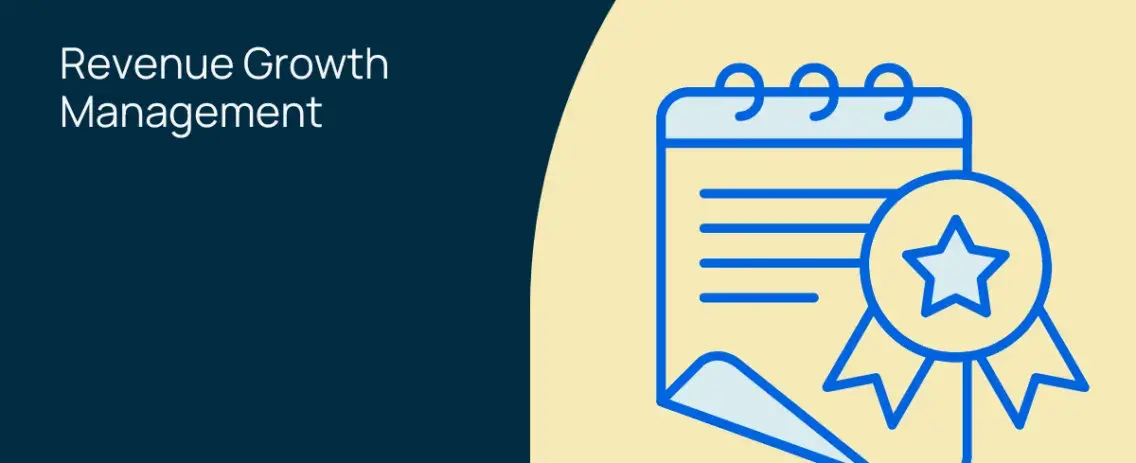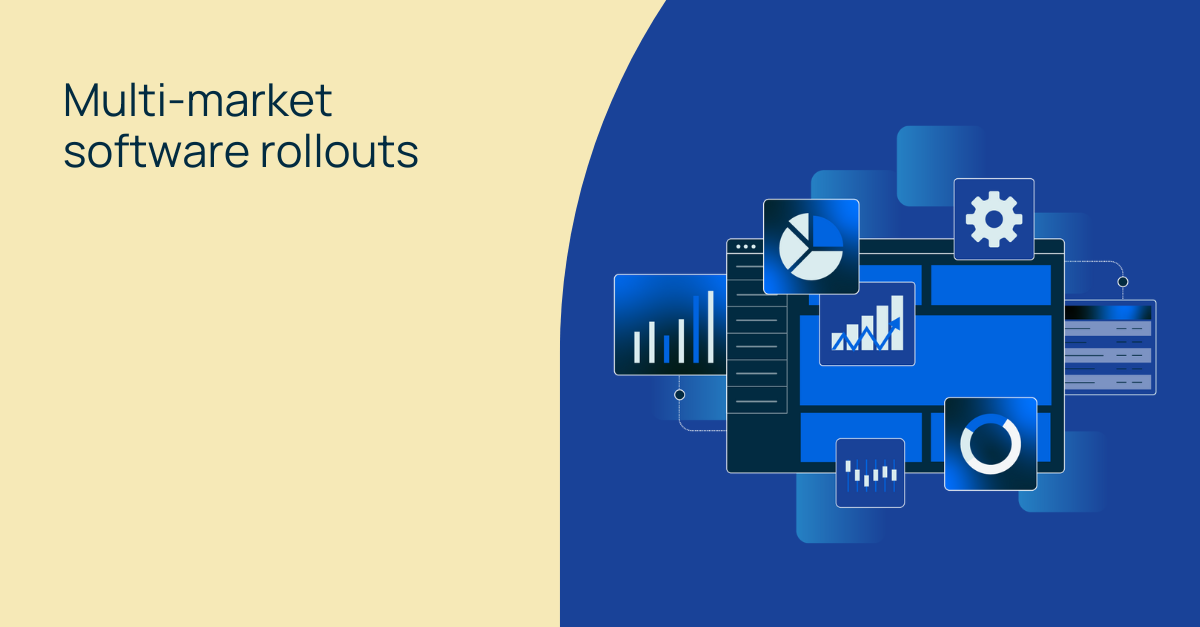
Profitable revenue growth management: Best practices to drive success in CPG
Revenue growth management (RGM) has come a long way since its early days in the aviation industry in the 1950s and its later adoption in the hotel industry. Today, it’s a crucial strategy for driving sustainable profit growth in consumer-packaged goods (CPG) companies. With consumer behavior becoming more unpredictable, price sensitivity rising, and brand loyalty waning, effective RGM has never been more important. However, successfully implementing profitable revenue growth management remains a challenge. According to global consulting firm Bain & Company, “more than 80% of the CP chief executives we’ve spoken to are dissatisfied with their RGM results.” Additionally, “About 75% of RGM programs do not generate positive profit growth for both the retailer and the manufacturer.”
Winning strategies for profitable revenue growth management
Given these challenges, this blog post outlines best practices for achieving profitable growth through effective RGM. Implementing profitable revenue growth management requires a long view that goes beyond unsustainable quick-win tactics. By adopting a revenue and profit-focused approach, CPG companies can build resilience in a competitive market and maximize profitability. Here are six strategies that commercial teams can implement to drive success:

1. Leverage data analytics for improved demand planning
Accurate demand planning is the cornerstone of profitable revenue growth management in CPG. Strong demand planning helps prevent costly inventory issues and ensures product availability during high-demand periods. By creating a reliable baseline, it also serves as the foundation for other critical processes, such as trade promotion optimization and revenue planning.
To achieve this, CPG companies should adopt best practices in demand planning, including historical data analysis and AI/machine learning. By leveraging AI, companies can identify order patterns and seasonality, which helps in predicting future demand more accurately. Additionally, with the right tools, AI can also assess the impact of marketing and promotional events, providing a comprehensive view of factors influencing demand.
Machine learning enhances demand forecasting by providing advanced predictive capabilities. By analyzing vast amounts of data, machine learning algorithms can identify complex patterns and make accurate predictions about future demand. This technology not only enables CPG companies to respond proactively to market changes and optimize their inventory levels but also brings significant efficiency gains and removes human bias from the forecasting process. With these benefits, companies can make more informed decisions and better align their strategies with market dynamics.
Historical data analysis is an essential practice in CPG demand forecasting. By examining past sales data, companies can identify patterns and trends that inform future demand forecasts. However, it is best practice not to do this manually. Instead, leveraging AI/ML for this analysis is recommended. Manual analysis is often applied at a very high level in the product and plan account hierarchy, which is less reliable and less valuable for promotions. Using software for this purpose brings more detailed insights, saves time, and enables a focus on outliers. This analysis helps in understanding seasonal variations, promotional impacts, and other factors that influence demand.
By leveraging advanced data analytics for improved demand planning, CPG companies can enhance their ability to meet consumer demand, reduce inventory costs, and ultimately drive profitable revenue growth.
2. Develop the most optimal promotional plan
Trade promotions are a source of top and bottom-line growth in CPG. Promotional planning, therefore, plays a crucial role in profitable revenue growth management. A well-structured promotional plan is essential for maximizing returns and aligning with broader RGM objectives. But how do you create a plan that truly drives profit?
“Many companies cannot accurately and consistently distinguish between poorly performing promotions and more profitable ones. In a Strategy& survey, only 22 percent of companies could measure their trade spending at the individual event level.” — strategy&, PwC
First, it’s important to evaluate past promotion effectiveness. Analyze tops and flops. This helps you understand why some promotions resonated with your customers while others didn’t. Aligning promotions with consumer demand cycles is another key strategy. For example, running a promotion for sunscreen in the summer makes sense, but doing so in the winter might not yield the same results.
When bottom-line growth is a key objective, it’s also vital to prioritize high-ROI promotions. However, remember that the right promo plan depends entirely on your goals. Sometimes, the aim might not be ROI-driven but rather to increase market share, stimulate trial, or achieve other objectives.
Using predictive analytics can significantly refine your promotional plans. Forecasting and analytics software can predict promotional outcomes, helping you optimize your investment. For instance, if the data shows that a certain type of promotion consistently drives higher sales, you can allocate more resources to that strategy.
By developing the most optimal promotional plan, CPG companies can ensure that their promotions are not only effective but also aligned with their overall revenue and profitability goals.
3. Optimize pricing strategies to capture greater value
Pricing precision is key to profitability in profitable revenue growth management. Getting your pricing right can have a significant impact on profit growth. But how do you ensure your pricing strategies are effective?
First, it’s important to understand your customers. Customer segmentation allows you to tailor pricing strategies to different groups based on their willingness to pay. For example, premium customers might be willing to pay more for high-quality products, while price-sensitive customers might respond better to discounts and promotions.
Price elasticity analysis is another crucial technique. By understanding how changes in price affect demand, you can set prices that maximize revenue without driving customers away. For instance, if a small price increase leads to a significant drop in sales, it might be better to keep prices stable.
Competitor benchmarking is also essential. Keeping an eye on your competitors’ pricing strategies can help you stay competitive and avoid losing market share. If your competitors lower their prices, you might need to adjust yours to remain attractive to customers.
It’s important to note that we are talking about consumer prices here, but a manufacturer’s ability to influence consumer pricing may be limited. They can communicate a ‘consumer advised price’ (CAP) to the retailer, but in markets such as Europe, the actual price on the shelves is at the sole discretion of the retailer. Restricting the retailers’ ability to set their own prices would constitute a form of illegal price fixing.
Additionally, the pricing structure from CPG toward the retailer is crucial. At what price do they buy? Can the retailer make a profit based on the consumer advised price (CAP)?
Technology can greatly enhance pricing adjustments. Pricing software can analyze market data and provide recommendations for optimal pricing strategies. This helps you make data-driven decisions without the need for constant manual updates.
By optimizing pricing strategies, CPG companies can capture greater value and drive profitable revenue growth. 
4. Enhance cross-functional collaboration for seamless RGM execution
In CPG companies, breaking down silos between departments is essential for effective profitable revenue growth management. When sales, marketing, finance, and supply chain teams work together, they can create a cohesive RGM approach that drives success.
First, it’s important to establish shared KPIs. When all departments are working towards the same goals, it’s easier to align strategies and ensure everyone is on the same page. Regular cross-departmental meetings can also help keep everyone informed and engaged. These meetings provide a platform for discussing progress, addressing challenges, and making adjustments as needed.
Centralized performance tracking is another key practice. By having a single source of truth for performance data, teams can easily monitor progress and identify areas for improvement. This helps prevent profit losses due to misaligned strategies and inconsistent execution.
For example, imagine a scenario where the sales team runs a promotion without informing the supply chain team. This could lead to stockouts and lost sales. However, with regular communication and shared KPIs, both teams can work together to ensure that promotions are well-coordinated and inventory levels are sufficient.
By enhancing cross-functional collaboration, CPG companies can ensure that their RGM strategies are executed seamlessly, leading to greater profitability and success.
Read more about why CPG companies are investing in AI-enhanced analytics
5. Implement AI-enhanced tools for profitable revenue growth management
These days, AI-enhanced tools are invaluable to ensure that your revenue growth management is profitable. These tools support complex decision-making by providing predictive insights that help CPG companies stay ahead of the curve.
Why are AI-enhanced tools so valuable in RGM? Simply put, they can process vast amounts of data quickly and accurately, offering insights that would be impossible to obtain manually.
One of the best practices for using AI in RGM is to leverage tools that support demand forecasting. By predicting future demand, you can ensure that you have the right products available at the right time, reducing the risk of stockouts or overstocking. AI can also help with pricing optimization by analyzing competitor prices, price elasticity, and historical sales data to recommend the best pricing strategies.
Another practical application of AI in RGM is scenario planning. Tools like Visualfabriq can simulate different market scenarios, helping you understand the potential impact of various strategies before you implement them. This allows you to make more informed decisions and minimize risks. Additionally, AI significantly enhances operational efficiency and productivity, downsizing and reducing non-value-added activities, which is essential to survive and thrive in today’s highly competitive CPG landscape. By automating routine tasks and providing actionable insights, AI enables teams to focus on strategic initiatives and respond swiftly to market changes.
By implementing AI-enhanced tools, CPG companies can improve productivity, decision-making speed and accuracy, ultimately driving profitable revenue growth.
Read more about why CPG companies are investing in AI and advanced analytics
6. Monitor performance with KPIs linked to profitability goals
Tracking the right key performance indicators (KPIs) is essential for effective profitable revenue growth management. Focus on profitability-driven KPIs like ROI on promotions, cost efficiency, and profit per product line. These metrics provide valuable insights into your RGM strategy’s performance.
Key metrics to track include gross profit, promotional ROI, and customer lifetime value. Gross profit shows overall profitability, promotional ROI assesses the effectiveness of promotions, and customer lifetime value helps with decisions on customer acquisition and retention.
Continuous improvement through performance reviews is crucial. Regularly assess and adjust strategies based on KPI performance to ensure alignment with profit goals. For example, if a promotion isn’t delivering the expected ROI, tweak your approach or allocate resources to more effective strategies.
By monitoring performance with KPIs linked to profitability goals, CPG companies can drive profitable revenue growth and achieve long-term success.
Boost your bottom line with profitable RGM
By adopting best practices in profitable revenue growth management, CPG companies can boost profitability and build resilience in a competitive market. Leveraging data analytics for demand planning, developing optimal promotional plans, optimizing pricing strategies, enhancing cross-functional collaboration, implementing AI-enhanced tools, and monitoring performance with KPIs are key strategies to drive success. Embrace these practices to achieve sustainable profit growth and stay ahead in the industry.
How Visualfabriq can help you with profitable revenue growth management
Elevating your RGM game requires a blend of forward-thinking strategies and state-of-the-art technology. Visualfabriq can help you master that challenge with award-winning software for CPG, masterminded by business insiders. Empower your teams and embark on a journey of growth and success! Book a demo today to learn more.


.png)
.png)